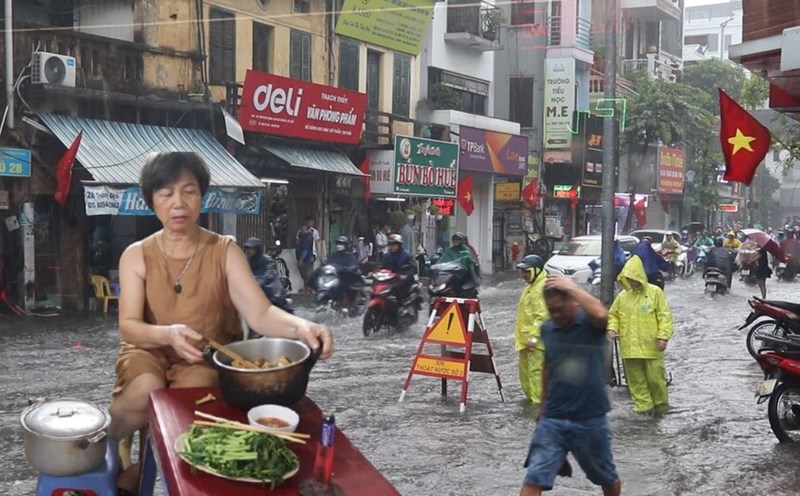Unlocking the source of high-yielding rice
The story was in 1976, when he was Chairman of the Ho Chi Minh City People's Committee, Mr. Vo Van Kiet returned to Can Tho to visit his close friend during the war, Mr. Pham Son Khai - Principal of Can Tho University.
While chatting, listening to Mr. Khai showing off that Dr. Vo Tong Xuan had worked at the International Rice Research Institute (IRRI), Mr. Kiet immediately enthusiastically said: "After the conquest, we will easily face the hungry army, so rice is very important...". So the story shifted to rice.
Suggested, Dr. Xuan expressed: "Currently, most people grow rice in one crop, low productivity because there are no noble rice varieties, but this one has many on the IRRI side". Hearing this, Mr. Kiet immediately said: "So it's great, doctor, promote relationships to help people".
Those words of encouragement were like a command to inspire Dr. Xuan to commit. Now the two are already naturalists, but that meeting will forever be a beautiful mark in the history of Vietnamese rice.
Not only did he increase communication to receive and transfer new varieties, Dr. Xuan also created a "agricultural promotion art" program, but he was also a scriptwriter and musician, playing many musical instruments such as: Trong, mandatoline to integrate knowledge of growing caouted rice and art to easily attract farmers to enjoy and acquis basic knowledge about rice plants.
Also from Mr. Kiet's encouragement, Dr. Vo Tong Xuan also birthed the Agricultural Science and Technology Program on Ho Chi Minh City Television.
In early 1978, I went to Doi to open an agricultural extension program. At first, the brothers were a bit concerned because this was very new, but when I heard them present Mr. Vo Van Kiet's idea of expanding rice cultivation, everyone agreed to "pull up the fence" to do it" - a contemporary of Professor Xuan said.
It is called tearing the fence because it has asked for the policy for many consecutive months without a response, while the need to encourage farming to soon access high-yielding rice is very urgent... When put into operation, the program was warmly welcomed by the people, especially rice growers, surpassing the cai luong program - a traditional entertainment form specific to the people of the Mekong Delta.
Opening 2 rice granaries
Former Prime Minister Vo Van Kiet was also the one who opened the two abandoned fields: Dong Thap Muoi (Dong Thap - Tien Giang - Long An) and Long Xuyen Quadrangle (An Giang - Kien Giang - Can Tho) to become the largest rice granary in the country. Not only did he inspire localities to boldly implement, he also issued many decisions to turn what seemed impossible into possible.
At the "Summary of 30 years of exploitation of Muoi Thap Dong Thap" held in 2010 in Dong Thap, Mr. Nguyen Thanh Phong - former Chairman of Dong Thap Provincial People's Committee - shared that around 1982, in his role as Vice Chairman of the Council of Ministers and Chairman of the State Planning Committee, Mr. Kiet held many meetings with leaders of the three provinces in Dong Thap Muoi region to discuss exploitation measures.
Seeing localities frustrated by the previous warnings of many foreign scientists about the terrible consequences of penetrating alum bags... Mr. Kiet clearly demonstrated his mettle and vision: "We must do it. Because if lost, it will only lose the abandoned fields, and if it is lost, it will benefit the whole country".
With that spirit, in 1983, he implemented the Program "S Nhung Mekong Delta Basic Research", as a scientific basis for the exploitation of Dong Thap Muoi and Long Xuyen Quadrangle. After that, he continued to issue many decisions that would have been difficult to birth without him. A typical example is the decision to dig the Hong Ngu canal (Dong Thap) - Vinh Hung (Long An) 45km long.
Reality proves this is the right decision: The canal that carries fresh water and alluvium from Tien River through Dong Thap Muoi to Vam Co Tay River helps wash alum, turning dead land into rice fields for 2-3 crops/year. Recalling that effort, the people called it "Central Canal", later the name was legalized.
According to Dr. To Van Truong - former Director of the Southern Institute of Water Resources Planning, who advised the late Prime Minister Vo Van Kiet on irrigation, this is a canal with dual functions: Bringing the early season alum water to the West Sea and bringing the Hau River's freshwater into the fields to wash alum, renovating 500,000 hectares of the low-lying area of the Long Xuyen Quadrangle (now under An Giang) to produce effectively.
On July 10, 2009, in accordance with the people's wishes, the An Giang Provincial People's Council agreed to name the canal Vo Van Kiet. 3 years after his death, the province inaugurated " Vo Van Kiet Cultural Park" at the beginning of the canal, as a reminder of his merits to future generations.







